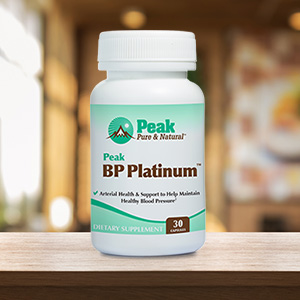Get Easy Health Digest™ in your inbox and don’t miss a thing when you subscribe today. Plus, get the free bonus report, Mother Nature’s Tips, Tricks and Remedies for Cholesterol, Blood Pressure & Blood Sugar as my way of saying welcome to the community!
The 7 best diets for lowering blood pressure

There’s no lack of research comparing the detrimental effects of a meat-heavy diet with the benefits of a plant-based diet.
By now, we’re convinced that eating more vegetables and whole grains can keep weight and cholesterol in check and can lower the risk of heart attack and stroke.
But is going heavy on the vegetables enough? If you substitute a salad for that steak, are you home free?
As it turns out, there are quite a few ways to eat a plant-based diet. And they’re not all created equal, especially when it comes to controlling your blood pressure, which of course is crucial to lowering your risk of heart disease and stroke.
Let’s take a look at some of the recent research into different plant-based diets and how they affect your blood pressure.
More high-quality vegetables = lower blood pressure
The INTERMAP study (International Study of Macro/Micronutrients and Blood Pressure) was published in July.
Using a tool known as the Plant-Based Diet Index, or PDI, a group of researchers from five countries, including the United States, assessed the plant-based diets of more than 4,500 men and women ages 40 to 59 living in Japan, China, the United States and the United Kingdom.
The index assigns positive PDI scores to healthy plant-based foods like fruits and vegetables and whole grains, and negative PDI scores to animal foods (meat, eggs and dairy) and to unhealthy plant-based foods like desserts, potatoes, fruit juices, high sugar beverages, sweets and refined grains.
As you’d expect, the results from the study showed that a healthy PDI is associated with lower blood pressure, while an unhealthy PDI is associated with higher blood pressure.
The study also revealed that, in order to affect blood pressure, simply reducing animal foods isn’t enough. In fact, it turns out that the nutritional quality of the plant-based foods we select is more important than eliminating all animal products.
«SPONSORED»
DASH diet is best, but you’ve got some options
At the University of Warwick Medical School, a systematic review of previous research into seven different plant-based diets also proved that the total elimination of animal products is not necessary in order to improve blood pressure.
Lead author Joshua Gibbs, a student at the University of Warwick School of Life Sciences, describes the study, “We reviewed 41 studies involving 8,416 participants, in which the effects of seven different plant-based diets (including DASH, Mediterranean, Vegetarian, Vegan, Nordic, high fiber and high fruit and vegetables) on blood pressure were studied in controlled clinical trials.
“A systematic review and meta-analysis of these studies showed that most of these diets lowered blood pressure. The DASH diet had the largest effect reducing blood pressure…”
Gibbs also says that a diet higher in plant-based products, even with limited consumption of animal products, could result in a 14 percent reduction in strokes, a 9 percent reduction in heart attacks and a 7 percent reduction in overall mortality.
Your options for plant-based eating
The University of Warwick study mentions seven different plant-based diets.
It’s good to have options when it comes to gradually changing your diet to lean more heavily on plant-based foods. If you make a gradual adjustment, rather than a drastic, overnight change, you’re more likely to stick with your new pattern of eating.
The seven options mentioned in the study are:
DASH diet: DASH stands for Dietary Approaches to Stop Hypertension. It consists of 8 to 10 servings of fruits and vegetables a day, whole grains, beans, nuts, low-fat dairy, lean meat like poultry or seafood and healthy fats. It limits foods like red meat, added sugars and unhealthy fats.
Your blood pressure numbers will improve even more if you combine the DASH diet with a reduction in sodium, beginning with eliminating processed foods.
Mediterranean diet: One large, long-term study showed that closely following a Mediterranean diet lowers stroke risk by 22 percent in women but only 6 percent in men.
Eating “Mediterranean style” means eating mostly fruits, vegetables, legumes and nuts, along with fish or poultry once or twice a week. It means including healthy fats like olive oil, anti-inflammatory herbs like turmeric, basil and cinnamon and drinking moderate amounts of red wine, if you wish.
Nordic diet: Similar to the Mediterranean diet, only it includes foods that are native to Scandinavia, like herring. A Danish dietitian lost 88 pounds by following the Scandi Sense Diet, a simple-to-follow version of the Nordic diet that she designed.
The other four diets mentioned are fairly self-explanatory:
- Vegetarian — where the main foods are fruit, vegetables, whole grains, legumes, nuts, seeds, dairy and poultry products
- Vegan — which consists exclusively of plant foods (no dairy, eggs or poultry)
- High-fiber diet — most plant foods, whole grains and legumes, which are high in fiber
- High fruit and vegetable — especially to increase polyphenolic load.
Whichever way you approach it, you’ll be doing your heart a favor by implementing some form of one of these diets.
Editor’s note: Have you heard of EDTA chelation therapy? It was developed originally to remove lead and other contaminants, including heavy metals, from the body. Its uses now run the gamut from varicose veins to circulation. Click here to discover Chelation: Natural Miracle for Protecting Your Heart and Enhancing Your Health!
Sources:
Can a plant-based diet affect blood pressure? — Medical News Bulletin
Association between plant-based diets and blood pressure in the INTERMAP study — BMJ Nutrition, Prevention and Health
Plant-based diets shown to lower blood pressure even with limited meat and dairy — Science Daily













